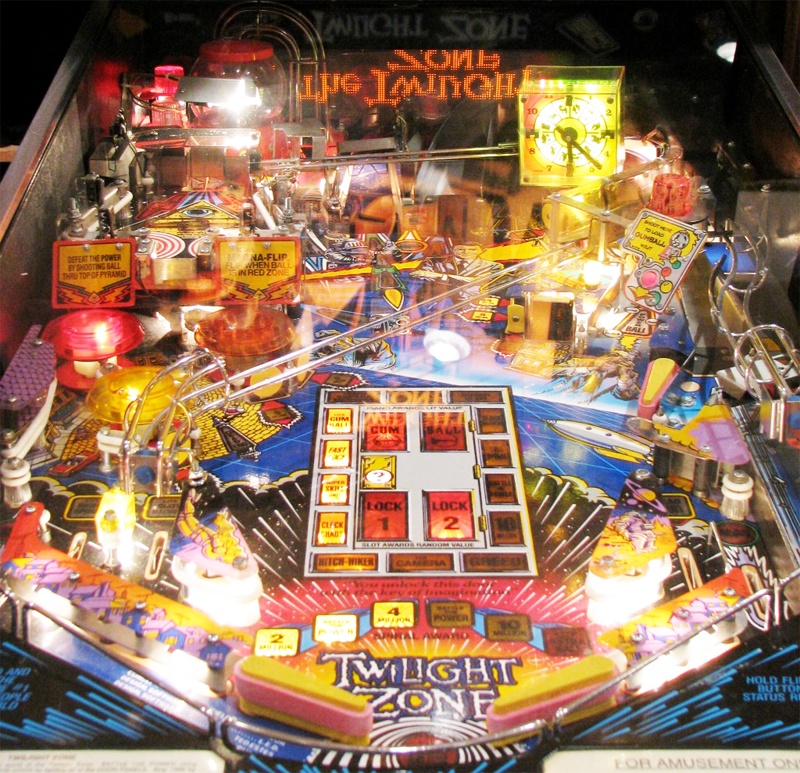Design
Before anything else, you need to have a design you want to build.
Contents
Pinball Basics
Users of this site are assumed to have a basic understanding of what a pinball machine is and of the basic operation and maintenance of them, but for the purposes of designing one, a pinball machine generally consists of at least a minimum of a flat surface (generally plywood) for a steel ball to roll on, machine-controlled devices that interact with the ball such as switches or rubbers, and user-controlled devices to direct the ball, such as flippers.
Beyond that, the sky is the limit in terms of your ideas and creativity. There are no rules that say you must use the "Two Flippers with In-lanes" standard that has been the convention since the 1950's, and perhaps since you've decided to make your own machine, you have some ideas that fall outside of the traditional designs.
Layouts
If you need some inspiration, the modern machine layouts fall into two categories: Flow and Stop-and-Go.
Flow
For a game to be described as a Flow machine, the amount of time the ball is fully stopped without player interaction is kept at a bare minimum. This means outer loops that bring the ball back to the flippers quickly, allowing for looping, continuous shots.
An example of this type of game would be Attack From Mars, 1995 machine produced by WMS:
The game uses a Fan layout where all shots are direct lines from the flippers that mostly loop back to the flippers, allowing for quick and continuous ball action.
Stop and Go
For Stop and Go games, flipper shots can loop back to the flippers but many of the shots will involve scoops, ball traps and other devices that interrupt the flow of the ball, or cause delayed re-directions based on game rules.
An example of this type of game would be "Twilight Zone", a 1993 machine also produced by WMS:
In this game, the majority of shots result in a ball stop or re-direction to a path not directly in line with the flippers.


